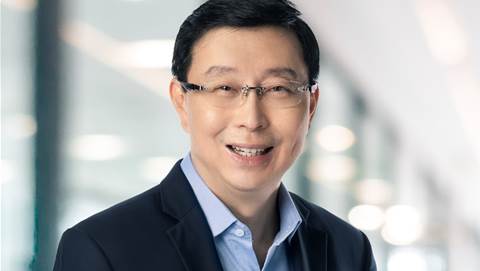Often unseen, procurement is an inevitable aspect that enables organisations to operate seamlessly. The Suez Canal blockade and the global chip shortage are recent curveballs that reveal what can go wrong and the critical implications.
What can businesses do to be ready for future disruptions, whatever the kind? Oliver Stein, Director, South East Asia of digital procurement solution provider Jaggaer outlines to iTNews Asia steps companies can take.
iTNews Asia: Many organisations have taken their back-office functions for granted for decades now. How big a role has this played in perpetuating the current global disruptions?
The back-office contributes in a significant way to the successful operation of businesses, not least of all their supply chains. Having the right processes and tools in place would have gone some way to cushioning the blow from the pandemic for many organisations.
Pre-pandemic, far too many organisations were guilty of overlooking or even undervaluing their back-office functions. A good example of what this can lead to is the current global chip shortage. The shortages are impacting nearly every manufacturer around the world with businesses scrambling to find alternative solutions.
Often, too much focus is put purely on cost from a procurement perspective. Rather, these functions should be given license and remit to start factoring in other areas of value and risk mitigation to their supply chain. This could include a multi-country supplier base and shipment routes, or consistent dialogue and improvement with their supplier base to encourage resiliency and innovation.
iTNews Asia: Would you say recent events have been a watershed and that supply chain has become a key priority for businesses in Asia?
Every market, every sector and nearly every business has been impacted by the pandemic. This was no different in Asia, where we’ve seen many industries come to a standstill as they tried to grapple with unparalleled levels of disruption to services.
Supply chain and procurement is seeing an increased focus in recent years but is still taken for granted by those beyond its sphere. Procurement of old just focused on what cost savings could be had for an organisation and there are still areas where that is still the case.
What is emerging more within Asia, that other parts of the world have already realised, is that your procurement function can generate value beyond cost savings alone.
There is an increasing global focus on ensuring labour standards and ethical supply chain, promoting ecological sustainability and combating corruption within the supply base. These are all targeted goals that organisations can work towards when they make procurement and supply chain a priority. In recent years, we have started to see progress within Asia in this area.
iTNews Asia: What has forced supply chain operations to move up the priority list for organisations? What pressures (both internal and external) have caused this?
Organisations have to identify failing or inefficient processes hindering their operations. Internal pressures, for example, were created in the first instance by the challenge to communicate and collaborate effectively in a landscape where employees were no longer able to interact in the usual workplace.
A suitable infrastructure is required to help restore some normality to coordination and in many instances, such support was insufficient at the inception of the pandemic, greatly affecting the efficiency of the supply chain.
Externally, businesses have had to rethink their approach from the typical ‘just-in-time’ methodology to a more pragmatic ‘just-in-case’ approach. The former mentality relies on a precise and coordinated process that makes a streamlined supply chain.
However, it also relies on consistent circumstances and as such, it is a model that is very susceptible to disruption from external forces. This has meant that organisations must reprioritise flexibility and adaptability into their supply chain, to still provide an efficient process but with greater robustness to deal with contingencies.
iTNews Asia: There has been increased talk of businesses boosting resiliency and agility as a result of the impact of the pandemic – is that really true? Are today’s organisations really prepared to deal with sudden and unexpected disruptions?
Businesses have increased their adaptability to deal with current circumstances, either out of necessity or of their own volition. We are seeing a landscape where organisations have had to scale back their operations or in some cases have gone out of business. Although some events cannot be foreseen, reasonable processes can be put in place for businesses to be more agile in unstable circumstances.
Take the example of an electronics manufacturer, here in SEA. This organisation was impacted at multiple points of its supply chain, bringing its delivery capabilities to a halt. Disruptions initially began in their ability to source necessary raw materials – with a large portion of their supplier base struck down due to COVID-19 restrictions, sourcing of their key direct goods was severely impacted.
When quarantine rules kicked in across almost all of their manufacturing plants, their production line took a hit. To top it all off, their main logistics paths for delivery were ocean freight based and they ended up having multiple containers stuck offshore in different locations due to docking and delivery restrictions imposed by various countries.
While this may have been one of the rarer worst-case scenarios, it highlights the importance of having a robust strategy in place to deal with any unforeseen circumstances.
iTNews Asia: What advice would you give organisations looking to better their procurement and supply chain operations to be resilient and agile in the long-term and meet evolving customer needs?
Though updating procurement processes requires investment, a suitable supply base is crucial and organisations will realise long-term gains.

It is worthwhile reassessing the current supply chain functions to find inefficiencies, such as a lack of diversity or a weak network infrastructure.
Once these risks have been identified, strategies must be put in place to effect positive change, with the most damaging threats prioritised accordingly. This can include investing in long-term supplier partnerships or expanding the diversity of qualified suppliers.
- Oliver Stein, Director, South East Asia of Jaggaer
Putting effort into the relationships with suppliers at the top 20% of spend can ensure that your suppliers themselves are agile and ready to adapt, which in turn provides additional resilience to the buying organisation.
Technology exists now that provides the data that is needed to both assess current processes and provide insights that may never have been considered before. Data is the best friend of any procurement function to grow and adapt, and every organisation should be looking at what access they have to their own data.
iTNews Asia: What does having a resilient supply chain look like (e.g. diversifying suppliers, digitising operations)?
A robust supply chain strategy will likely look different for each organisation. For some industries, having a diverse portfolio of suppliers and market locations to rely on may be the most important factor.
A limited network increases a company’s exposure to turbulence and reduces the ability to be flexible when required. For example, many businesses have learnt throughout the pandemic that reliance on a single delivery route or single supplier base can have devastating consequences when deliveries of key components are compromised. By diversifying the approved supplier base, businesses can mitigate this problem and make themselves more adaptable to changing conditions.
For others, resiliency may come in the form of ensuring partnerships with dependable suppliers. Procurement trends are evolving away from race-to-the-bottom supply costs as firms increasingly consider their suppliers more holistically. A supply chain that is built on the foundations of enduring, mutually beneficial partnerships can help businesses mitigate risk factors, with such factors including proximity, sustainability and reliability.
iTNews Asia: How do you see the supply chain landscape and procurement landscape evolving in the next 3 years?
The supply chain and procurement landscapes have evolved at quite a pace, with processes being made quicker and more efficient through technology. That trend is only expected to continue, in particular the utilisation of automation.
More and more elements of the supply chain can be automated, quantified and analysed through intelligent platforms. These tools are also able to process and share valuable insights in easily digestible formats so businesses are able to better analyse weaknesses and inefficiencies in their operations. Software can also accurately forecast arrivals of goods through a streamlined supply chain and better predict disruptions, helping businesses stay more resilient.










